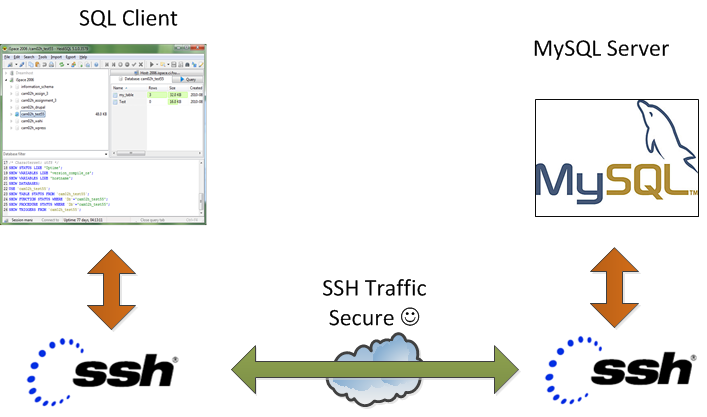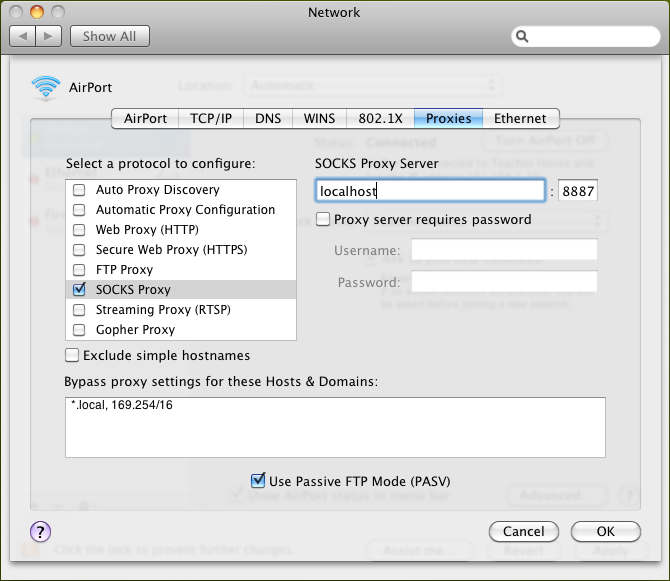
- Ssh proxy server windowns how to#
- Ssh proxy server windowns install#
- Ssh proxy server windowns code#
Once you've saved the config file, you'll be able to see those hosts in the Remote Explorer, as well as any folders you have opened on that host. You can add the information for all the hosts you have. The file location where you've stored your private key. The default port is 22, but if you've specified a unique port, you can configure it here. The user you've specified to log in to the machine via SSH. The hostname of server (you can use the IP address of the server). You'll get completions and colorizations in this file and you can press ( ⌃Space (Windows, Linux Ctrl+Space)) for IntelliSense to learn more about the config options.Īn easy-to-remember alias for your host machine. There are many more configuration options you can specify in the SSH config file format. Here's an example of an SSH config file: # Read more about SSH config files: Host python-linux-vm HostName User sana IdentityFile ~/.ssh/id_python_vm Host node-vm HostName User sana Port 5522 IdentityFile ~/.ssh/id_node_vm To use an SSH config file, click on the remote indicator to bring up the remote commands, choose Open Configuration File, and select the file that follows the path "Users//.ssh/config". OpenSSH supports using a configuration file to store all your different SSH connections. If you log in to multiple remote servers or local virtual machines on a regular basis, there's a better way to connect without having to remember all the usernames, addresses, and additional configuration options. In the earlier Remote SSH blog post, we only connected to a single machine and did so by entering the when prompted. Click on the indicator to bring up a list of Remote extension commands.
Ssh proxy server windowns code#
This indicator tells you in which context VS Code is running (local or remote).
Ssh proxy server windowns install#
If you don't already have the extension installed, you can search for "remote ssh" in the Extensions view ( ⇧⌘X (Windows, Linux Ctrl+Shift+X)).Īfter you install the extension, you'll notice an indicator on the bottom-left corner of the Status bar. The Visual Studio Code Remote - SSH extension allows you to connect to a remote machine or VM using SSH, all from inside VS Code. In this blog post, we'll go into some tips and tricks that you can use to get the most out of your remote setup.
Ssh proxy server windowns how to#
Octoby Sana Ajani, a previous Remote SSH blog post, we went over how to set up a Linux virtual machine and connect to the VM using the Remote - SSH extension in Visual Studio Code.


Where the command Proxy Command ssh -q -W %h:%p vps1, means run ssh in quiet mode (using -q) and in stdio forwarding (using -W) mode, redirect the connection through an intermediate host ( vps1).

In this example, the target host is contabo and the jumphost is vps1. The second method is to use the Prox圜ommand option to add the jumphost configuration in your ~.ssh/config or $HOME/.ssh/config file as shown. Now try to connect to a target server via a jump host as shown. Therefore you need to add the following static jumphost ‘routing’ in ~/.ssh/config file and specify the host aliases as shown. Static jumphost list means, that you know the jumphost or jumphosts that you need to connect a machine.

The same syntax can be used to make jumps over multiple servers. If usernames or ports on machines differ, specify them on the terminal as shown. This tells ssh to make a connection to the jump host and then establish a TCP forwarding to the target server, from there (make sure you’ve Passwordless SSH Login between machines). The simplest way to connect to a target server via a jump host is using the -J flag from the command line. There is a number of valid reasons why jumphosts are needed. In above scenario, you want to connect to HOST 2, but you have to go through HOST 1, because of firewalling, routing and access privileges.


 0 kommentar(er)
0 kommentar(er)
